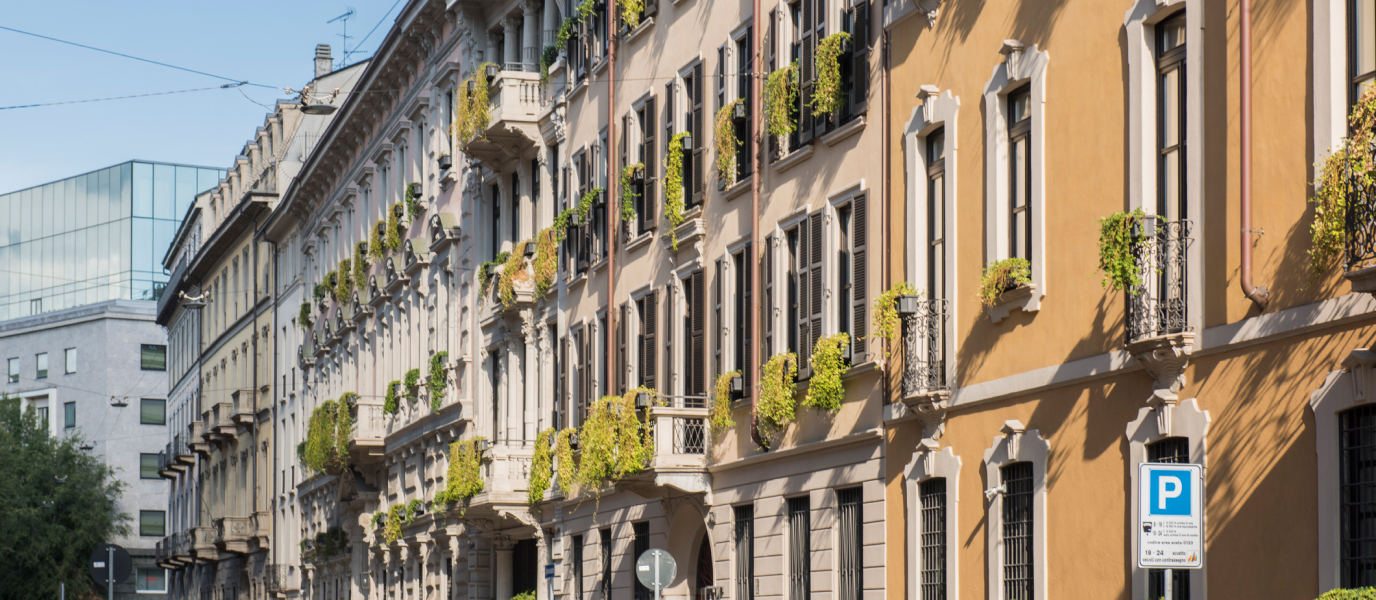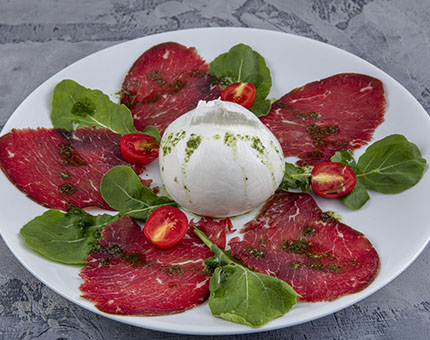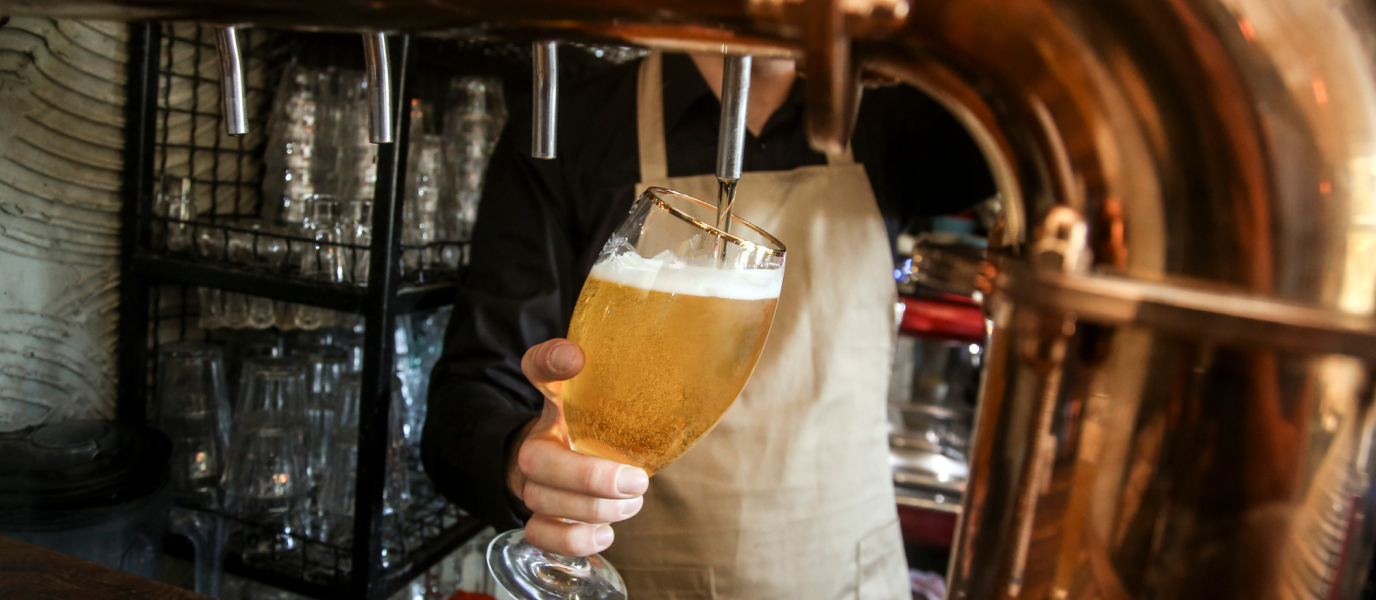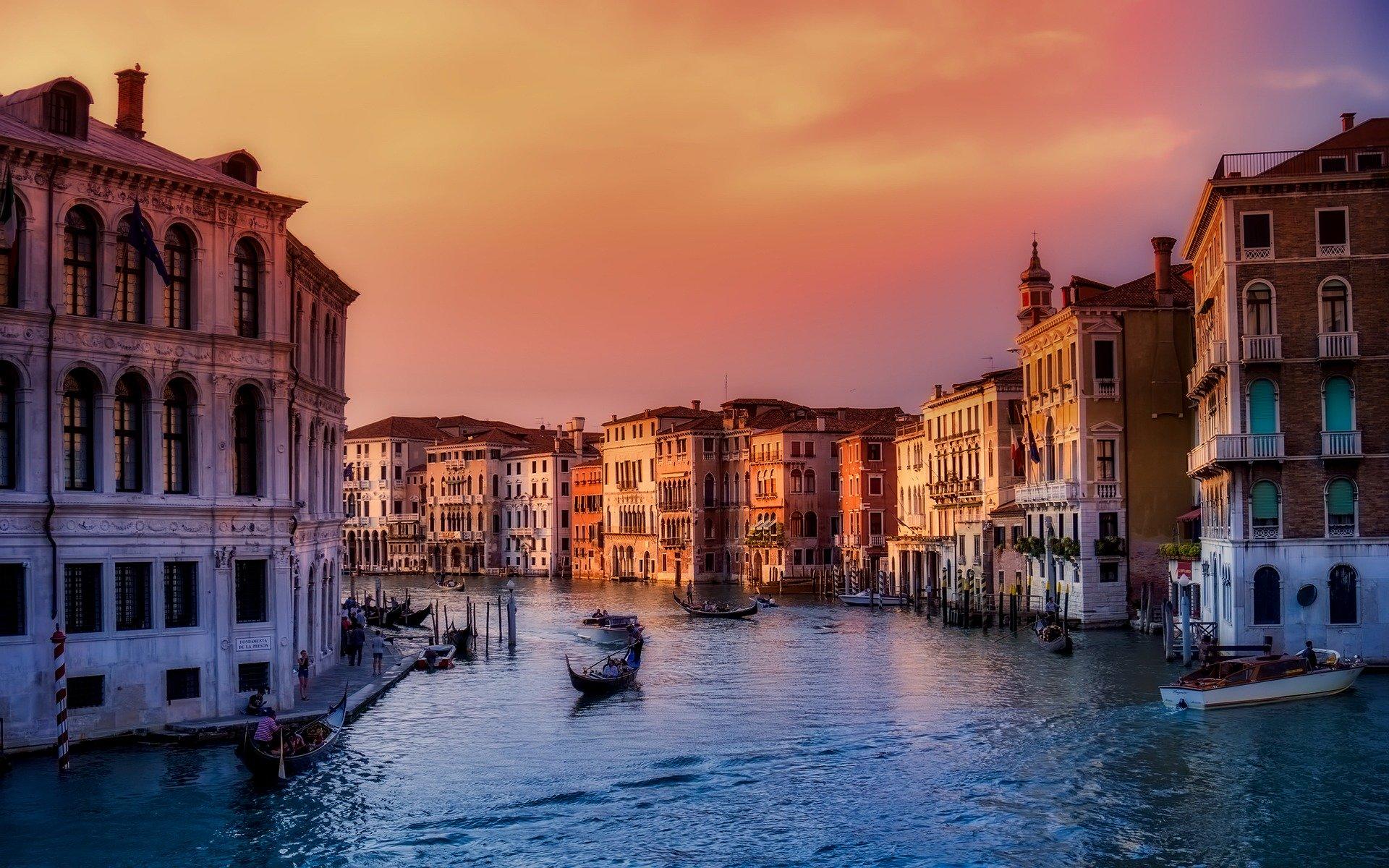The small, picturesque Brera neighbourhood comprises, together with five other districts, Zone 1 (or Milan’s historical centre). The cultural life of this neighbourhood, commonly referred to as the Milanese Montmartre, seems to revolve around its main historical building, Palazzo Brera, a beautiful architectural complex dating from the fifteenth century that houses, among other things, the Pinacoteca di Brera art gallery, Milan’s Botanical Garden and the Braidense National Library. Brera is also a charming shopping district, which continues to focus on small shops instead of large brands. The numerous restaurants and cafés with outdoor seating, the hidden antiques shops and the art galleries retain the bohemian air left by the artists who lived in Brera between the end of the nineteenth century and the early twentieth century.
And if by any chance the Brera neighbourhood is not enough for you, another of its plus points is that you can reach other interesting places in Milan on foot in a matter of minutes: Milan Cathedral – known as Il Duomo – to the south, Castello Sforzesco to the west, and the Indro Montanelli public garden to the east. In short, a place brimming with charm that should not be missed on your tour of old Milan.
Brera: the origins of a neighbourhood
Sometimes you can get clues about the historical origins of a place by taking a closer look at its etymology. And this is certainly the case of Brera, a name derived from the ancient Lombard word ‘brayda’, which would translate into English as an ‘expanse of cleared land’. This is no coincidence, if you consider that in the Middle Ages the land occupied by the current Brera neighbourhood, then located at the foot of the Roman walls of Milan, was kept empty for military reasons.
It stayed the same way until the early thirteenth century, when the Italian religious order of the Humiliati – Umiliati in Italian – settled in the Brera area in order to found a church and adjacent wool workshops. After their suppression by papal bull in 1571, a new order – the Jesuits – took over the property and began to construct the illustrious Palazzo Brera as its seat. However, in 1772 the Jesuits were also suppressed as a religious order in Italy, and so the Austrian state – led by the empress Maria Theresa I of Austria – took over the palace, founding the famous Pinacoteca di Brera (internal link). Years later, in 1809, the arrival of Napoleon I in Milan led to the expansion of the gallery, with the aim of exhibiting the most important works from the Italian territories conquered to date.
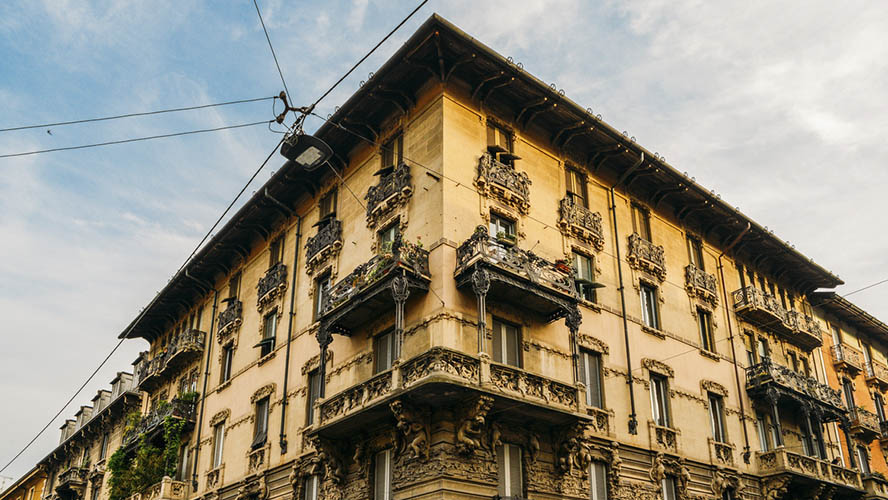
What to see in Brera: Palazzo Brera and Pinacoteca di Brera
Palazzo Brera, as previously mentioned, is the backbone of daily life in the neighbourhood, and not surprisingly, if you consider that it occupies about a tenth of the total surface area. Located at number 28 on Via Brera, this important Baroque palace (originally Gothic) surprises visitors with its vibrant cultural offerings.
Pinacoteca di Brera is, without a doubt, the jewel in the crown. It is accessed through a beautiful seventeenth-century interior courtyard, the centre of which is dominated by a Bronze sculpture of a semi-naked, exultant Napoleon Bonaparte. Rumour has it that the sculptor, under pressure from the French emperor, agreed to take a few liberties when it came to sculpting his Herculean torso. Once inside the gallery there are a total of 31 rooms – arranged in chronological order, from the thirteenth to twentieth centuries – in which what is considered to be one of the best Italian painting collections in the world is displayed. Paintings as famous as Saint Francis, by El Greco, The Last Supper, by Rubens, and Penitent St. Jerome, by Titian, are exhibited here. Other renowned painters represented in the gallery include Raphael, Tintoretto, Caravaggio and Modigliani. Incidentally, you may be interested to know that admission is free on the third Sunday of the month.
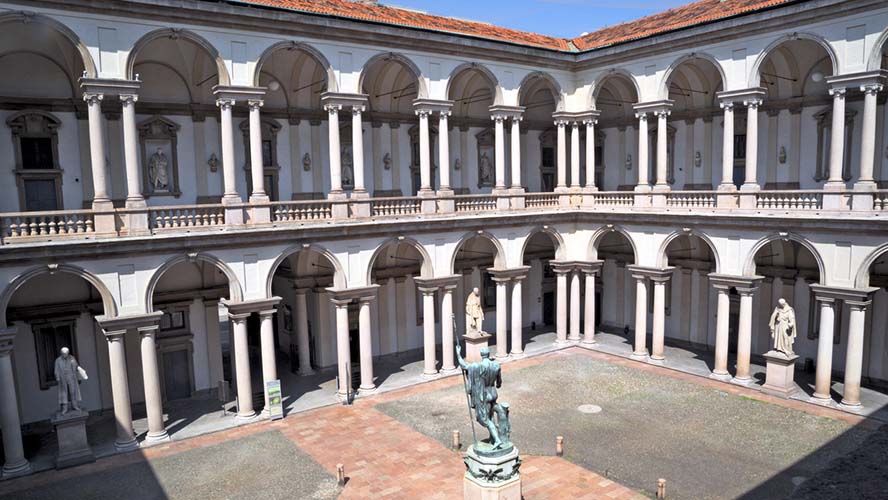
In the palace itself you can also visit the Academy of Fine Arts, a cultural institution created by the empress Maria Theresa I of Austria in 1776, which remained linked to the art gallery until its definitive separation in 1882. Its original function was to provide students with a place where they could find specific examples of paintings. In fact, today the Academy continues to welcome around 4,000 art students from all over the world. This might give you an idea of how fun the Brera neighbourhood is at night.
Around the courtyard is the Braidense National Library, one of the largest public libraries in Italy; the Brera Astronomical Observatory, converted into a museum full of astronomical instruments from different periods; and the beautiful Brera Botanical Garden.
Walks and restaurants in the neighbourhood
Despite all this history, these days the glamorous Brera neighbourhood especially brings to mind the writers of the Scapigliatura, an artistic and literary movement from the nineteenth century whose figureheads lived, in bohemian fashion, in some of the houses in the area. Thus, both sides of Via Brera, which starts in the very centre of the city, are lined with countless shops that still retain that artistic spirit of yesteryear. Vintage shops, specialising in second-hand clothing, sit alongside perfume shops, art galleries and book shops. It is also very common to find fortune-tellers and tarot readers in the middle of the street, who, for a small fee, will read your palm and reveal your future to you. And, if you want to soak up even more history, between numbers 13 and 15 on the street you will find Palazzo Cusani, a building dating from the seventeenth century that boasts, in equal measure, neoclassical and Baroque touches throughout the whole structure. Once the headquarters of the Ministry of War in the nineteenth century, it now houses the NATO Milan office.
On the small but charming Via Fiori Chiari, perpendicular to Via Brera, you will also find various restaurants. They are easy to spot, as their terraces tend to attract large crowds of people. One good recommendation is Trattoria Torre Di Pisa (Via Fiori Chiari, 21), a restaurant that has remained unchanged since it opened in the 1960s and that still offers a menu with marked Tuscan influence. Another recommendation is Nabucco (Via Fiori Chiari, 10), a restaurant serving purely Milanese cuisine that opened in 1970, whose inspiration comes from the nearby Teatro alla Scala (internal link) (Via Filodrammatici, 2), one of the most famous opera theatres in the world. As if that were not enough, Via Fiori Chiari also hosts an antiques market every third Sunday of the month, selling a wide range of fine porcelain, pocket watches, paintings and drawings, and second-hand clothing.
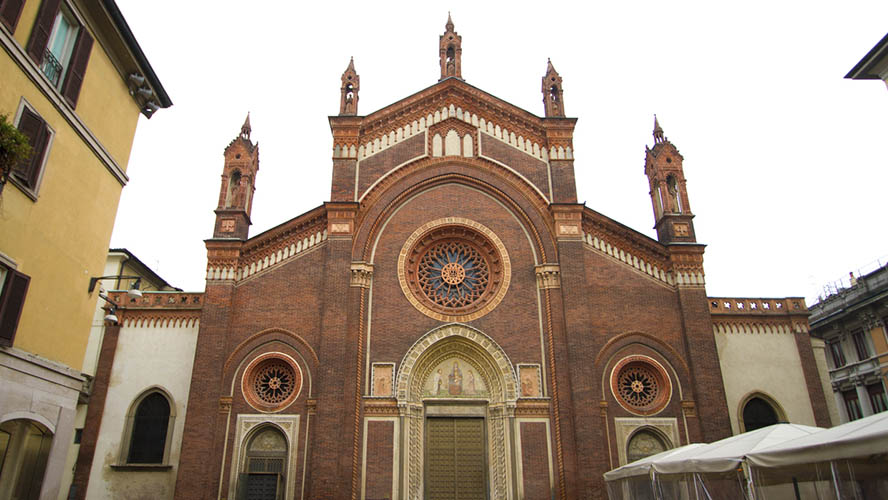
Finally, on a walk through the Brera neighbourhood you should also take some time to appreciate the many religious buildings that can be found, including San Marco church (Piazza San Marco, 2), Santa Maria del Carmine church (Piazza del Carmine, 2), San Simpliciano basilica (Piazza San Simpliciano, 7), Sant’Angelo church (Piazza Sant’ Angelo, 2), and Santa Maria Incoronata church (Via Corso Garibaldi, 116).
Further information:
How to get to Palazzo Brera:
- By metro: take the yellow line to Montenapoleone station.
- On foot: from Piazza del Duomo, take Via Giuseppe Verdi and continue straight until the Brera neighbourhood.




































































